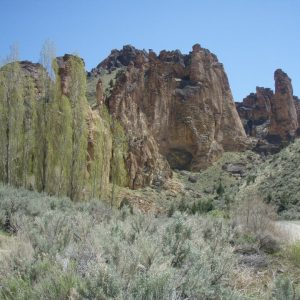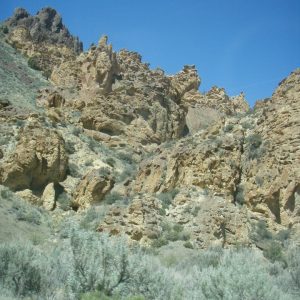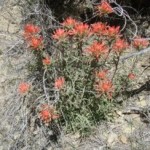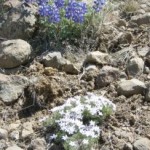I am settling in to my CLM internship with the BLM Mother Lode field office, located in the Sierra foothills East of Sacramento. This is my second CLM internship, and it is very different from my first CLM internship. Last year I worked with the BLM in Alturas, California. Alturas is situated in the remote Northeastern corner of the state, with very few people and vast landscapes. The Mother Lode field office is based in El Dorado Hills, an affluent suburb of Sacramento. Botanically, it is very familiar to me, the oak woodland and chaparral are reminiscent of the mountains of my hometown, Santa Barbara. My internship is specifically concerned with the Pine Hill Preserve (PHP), a nature preserve managed by the BLM. PHP consists of just over 4,700 acres and was created primarily to protect eight species of rare plants. The unique Gabbro soil formation found on the preserve and surrounding areas hosts a unique assembly of plants. 740 plant species have been found here, which is ten percent of Californias total flora, meaning this small portion of the state is incredibly diverse. Of the eight rare plant species found at PHP, five are federally endangered and three occur nowhere else in the world. One species, Pine Hill Flannelbush (Fremontodendron decumbens), has only about 120 surviving individuals. 
Since my arrival last month, I have been learning about the management practices and conservation issues at PHP. The two main threats to the rare plants and their associated ecosystem are development and lack of fire, which go hand in hand. Much of the habitat for the Gabbro soil plants has been converted into roads, houses, and other development, which makes conservation ecology seem all the more relevant. Whereas last year, I would drive down rough dirt roads for miles to access field sites, at PHP it involves practically parking in peoples’ driveways. The ecosystem is fire adapted, and the rare plants require fire to be successful, whether for seed germination or simply the disturbance of the chaparral which creates more light and space to grow. Fire suppression threatens to eliminate the niche these plants have been evolved for. Due to the proximity to houses, broadcast prescribed burns are difficult at PHP; although my mentor Graciela Hinshaw is working on approving one. Instead of burns, fuel breaks are created with mechanical thinning, and the vegetation is burnt in small piles, as shown in the picture from 2011. One project I have been working on is monitoring some piles that were burnt last Fall to see which plants are coming back, and if any rare plants have germinated. The good news is that the rare plants respond well to mechanical thinning and burn piles. This gives the nearby houses fuelbreaks, which protect them from fire, and the rare plants are provided with a suitable habitat– a win-win, which can be hard to find in the conservation world.

Burn Piles (2011)
I was also able to work at the BLM state office last week. The BLM California botanist, Christina Lund, is gone on a long term project, and Graciela has been taking on many projects for her. Graciela had me come to the state office to help with a literature search on several desert plants. Currently there are many renewable energy projects planned for BLM land in the California deserts. The main plant I researched was creosote bush, a ubiquitous shrub in that region. Lots of creosote will likely be bulldozed to build solar plants. Although the shrub isn’t much to look at, it has a fascinating natural history. It forms clonal rings of genetically identical “satellite plants” that grow radially at an extremely slow rate. The largest known ring, the “King Clone”, is 22 meters wide at its longest axis, and is estimated to be 11,700 years old! This may mean that that plant was one of the first to colonize the new land that opened up when glaciers receded and the Mojave desert formed, and has been growing there ever since. Anyway, Christina and others are working on establishing a minimum ring size to designate as protected. I was able to find some information and scientific articles, but it is a difficult question, since a creosote ring just one meter in diameter is already several times older than an old growth conifer. In any case it was interesting to do research for a project in the desert and learn about the ancient ecosystems there.

Creosote bush
I have also been able to participate in some outreach events. This included guiding a botany class that visited a stunning parcel called Kanaka Valley , which is exploding with wildflowers. Graciela told me that before being aquired by the BLM, Kanaka Valley was slated to be developed into a golf course… something I am grateful did not happen!

Kanaka Valley lupines
Its been a busy first few weeks, and I anticipate many interesting projects to come!
Joe Broberg
Pine Hill Preserve intern
BLM MOLO Field Office
El Dorado Hills, CA












